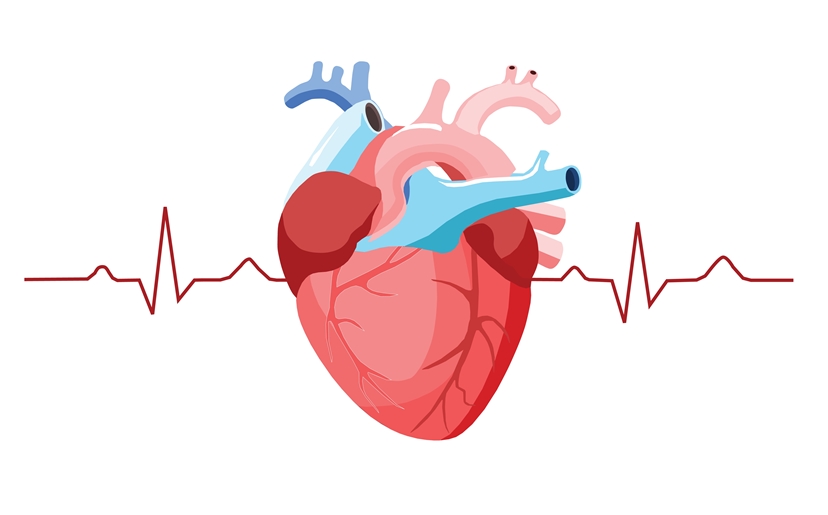Aortic Aneurysm and Complications
Aortic diseases are becoming more important in Thailand due to two primary causes: people lives longer and more Thai people having hypertension while receiving incorrect treatment.
Types of Aortic Diseases
Aortic diseases are divided into 2 main groups: 1) aortic aneurysm; and 2) aortic emergency, where patients will experience key symptoms like chest pain and intense and sudden back pain. This disease can be fatal if it is not diagnosed and treated quickly enough.
Aortic Aneurysm at Different Locations
Aortic aneurysm is grouped based on whether they occur in the chest or the abdomen.
In the chest, aneurysm is divided by location according to the 3 sections as follows:
- Ascending section of the aorta which connects directly to the heart.
- Transverse section that supplies blood to the brain and both arms.
- Descending section of the aorta.
Meanwhile, the abdominal section of the aorta are sub-divided into 2 sections as follows:
- Section superior to the renal arteries; and
- Section inferior to the renal arteries.
- Aortic aneurism is most frequently encountered below the renal arteries.
Diagnosis and Treatment of Aortic Aneurysm
The condition is diagnosed differently from before, because now we know that this disease is severe even when asymptomatic and that 70% of patients die after an aortic rupture. Usually, a rupture occurs after some common symptoms present themselves, such as chest pain, back pain and symptoms from pressure upon nearby organs, for example:
- Fatigue caused by aortic valve regurgitation.
- Loud breathing caused by pressure on the bronchi.
- Voice hoarseness due to pressure on the laryngeal nerves.
- Swallowing difficulty due to pressure on the esophagus.
- Bloody coughs or vomiting.
- Back, chest or abdominal pain caused by pressure on the spine.
- Fever with an unknown cause which is actually caused by aortic infection.
- Abnormal ecchymosis and bleeding due to blood clots in the aorta where the aneurism has occurred; or
- Blood clots causing obstruction in the brain, arms, legs or intestines, etc.
The condition can be quickly diagnosed with computer x-ray in ordinary hospitals. High-speed computer x-rays are fast and produce high-resolution imagery that allows for fast preparation of blood for surgery, because the blood donation and distribution system of the Thai Red Cros Society is quite effective.
Treatment of Aortic Aneurysm
If the aorta is still not significantly enlarged and has a low risk of rupture, treatment has to be administered at the cause, such as hypertension, followed by monitoring of aortic bulging based on chest x-ray or abdominal ultrasound and computer x-ray of the aorta. If the patient has symptoms or if it is found that the aorta has significantly become enlarged or is bulging rapidly, treatment has to be administered before it ruptures.
Modern treatments include open surgery, aortic stent graft and combined treatment involving both surgery and stent graft. If the section of the aorta that is bulging is located near the leg, open surgery is the standard procedure if the patient is healthy. However, if the patient is very old and has many co-morbidities, combined surgical and stenting approaches might be chosen instead.
The descending section of the aorta is mostly treated by aortic stent graft, while open surgery is the standard for the section above the kidneys, and combined stenting and open surgery are usually the choice for patients who might face risks during open surgery. Up to 90% of aortic cases below the kidneys can be treated by stenting.
Aortic Emergency
An aortic emergency has a number of key symptoms such as intense and sudden chest and back pain. Collectively known as aortic syndrome, it has 3 important causes, namely, aortic dissection, bleeding in the aortic walls and aortic wall injuries. Most frequently encountered is aortic dissection, especially in hypertensive patients who do not regularly take their medications, patients with family history of hypertension and patients with genetic disorders contributing to the weakening of their aortic walls such as Marfan’s Syndrome.
The dangers of aortic dissection are aortic rupture or pressure or blockage of artery branches, which can cause death as a result of ischemia, such as myocardial infarction, hemiplegia, paralysis on both legs, acute kidney failure, intestinal ischemia and infarction, and ischemia on both legs followed by infarction, which causes chemicals to be released into the bloodstream, acidosis, hyperkalemia and cardiac arrest.
Aortic dissection is divided into two groups. The first is caused by tearing from inner walls of the ascending aortic section connected to the heart. The disease has a mortality rate of 1% per hour or 50% within 48 hours. The only way to save the patient is by performing emergency surgery to replace the ascending aorta. In some cases, the transverse section also has to be replaced with stenting of the descending aorta.
Meanwhile, for aortic dissection in the descending aorta and/or transverse aorta, the best treatment option is aortic replacement with stent graft.
Bleeding from the aortic walls can appear similar to aortic dissection and it has a similar level of severity, so the treatment is also similar. The treatment for wounds in the aortic walls depend on the location of the wounds and potential dangers, but if left untreated, rupture and loss of blood can occur.
Phyathai 2 Aorta Center
The Aorta Center of Phyathai 2 Hospital has the capabilities and readiness to provide diagnosis and treatment for all types of aortic diseases, and we continuously improve our treatments to reduce complications and mortality.
You may find our specialist at our Heart Center
Phyathai 2 Hospital
International Correspondence Center
Tel: +66-2617-2444 ext. 2020 or 2047 E mail: onestop@phyathai.com
 @pt2_inter
@pt2_inter
 Phyathai 2 Cambodia
Phyathai 2 Cambodia
 PT2Chinese
PT2Chinese
 phyathai2inter
phyathai2inter
